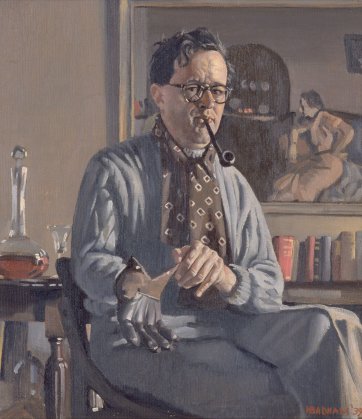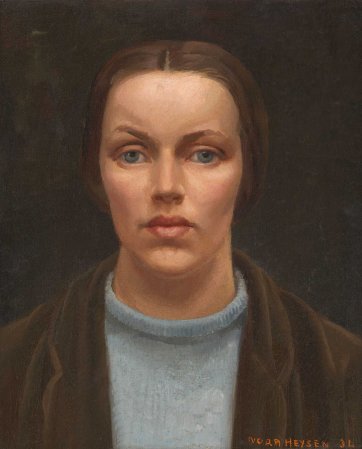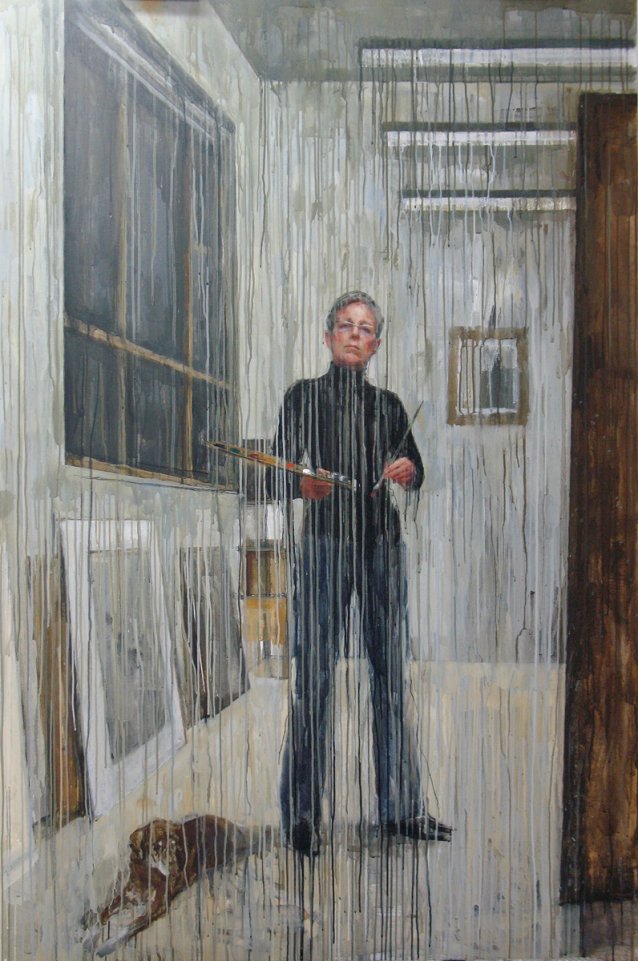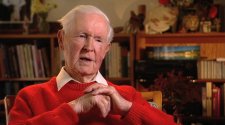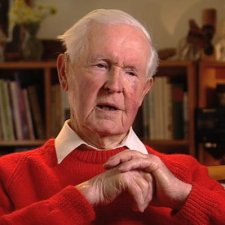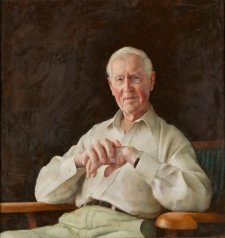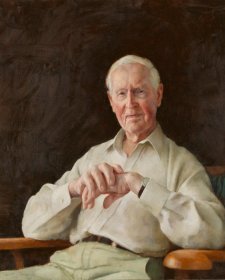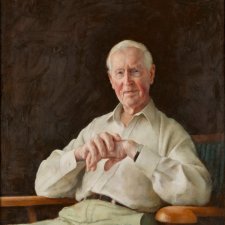These days, Jude Rae lives in a Sydney apartment where she can’t have a dog. In Canberra, though, she had a little kelpie bitch called Tilly, who slipped alongside her as she moved between her house and studio, beside the frosty vegetable beds in the big back yard.
In every portrait, including self-portraits, the artist chooses between acknowledging there’s a portrait going on, and representing the subject as oblivious of the process. Sometimes artists paint themselves in the act of painting, sometimes not. Amongst self-portraits in the National Portrait Gallery, Fred Williams holds a brush, but Herbert Badham’s pulling on a glove and Nora Heysen’s only a head and shoulders. Like others in the paintbrush-in-hand group worldwide, Rae’s stance and gaze reprise Diego Velázquez’s in Las Meninas of 1656. The most exhaustive, stimulating and verbose account of that supreme riff on the act of representation is Chapter 1 of Michel Foucault’s old book The Order of Things. Jude knows it well.


